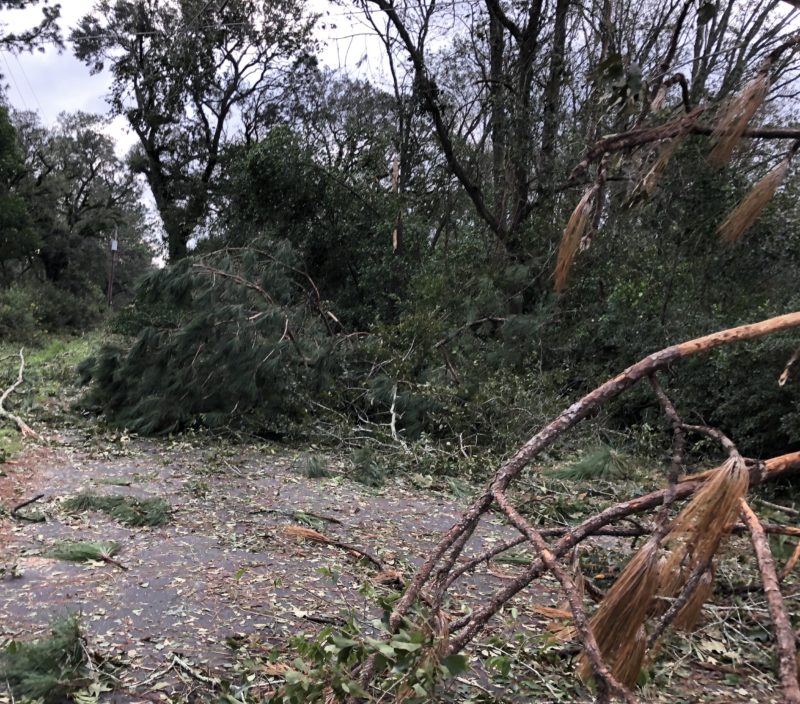
News Release
Understanding Your FEMA Letter: What to Do Next
ATLANTA – If you’re a Georgia resident who contacted FEMA for assistance, you may have received a letter from FEMA that says you’re ineligible for housing assistance. Read your letter carefully to understand the reason for the determination.
Keep in mind:
- FEMA cannot pay for damage covered by insurance or duplicate benefits from another source.
- FEMA grants are meant for costs to return your home to a safe and sanitary living space or functional condition. Damage to non-essential space or property is not eligible under FEMA programs. If you have questions about the type of damage eligible under FEMA programs, you can call the FEMA Helpline at 800-621-3362 (TTY 800-462-7585).
- The disaster-related damage must have occurred at your primary residence. FEMA programs address disaster-related losses, damages or needs only.
- Your disaster-damaged property must be located in a county designated for federal individual assistance: Baker, Crisp, Decatur, Dougherty, Early, Grady, Lee, Miller, Mitchell, Seminole, Terrell, Thomas and Worth.
There are many reasons for potential ineligibility for Housing Assistance. If you still have essential needs, and FEMA asks for more information or additional documents, you can appeal the initial decision and be reconsidered for federal assistance.
No. 1: You were insured.
- Contact FEMA if your insurance settlement is insufficient to meet your disaster-related needs or if you have exhausted the Additional Living Expenses provided by the insurance company.
- You may think you’re insured but your insurance company indicates the coverage was not for the cause of damage incurred. You must provide documentation that identifies the denial or benefits of your insurance settlement before FEMA will consider your assistance eligibility.
No. 2: You reported no home damage when you applied.
- Contact FEMA if the status of your home damage has changed. FEMA housing assistance typically only covers costs to return your home to a safe and sanitary living space or functional condition. Damage to non-essential space, landscaping, or loss of food is typically not covered by FEMA grants.
No. 3: Insufficient damage. Home is safe to occupy.
- The damage caused by the current disaster has not made your home unsafe to live in. Your home is still safe and sanitary or functional.
- If you disagree with FEMA’s decision, you can appeal in writing. Get third-party documentation to support your appeal (a bid for repairs or contractor estimates or other documentation condemnation notice, etc.) that states your home is uninhabitable due to the disaster.
No. 4: No initial relocation.
- You indicated on your application that you did not want to move while your damaged home was being repaired. This made you ineligible for FEMA temporary rental assistance. However, you have since found further damage to your home and have to move.
- Since your housing needs have since changed, contact FEMA to update your housing status and explain why you had (or will have) to relocate.
- You also may be eligible for repair or replacement grants for your home or personal property.
No. 5: Proof of occupancy.
- When FEMA is unable to verify your occupancy of your primary residence, you may provide FEMA with documents such as utility bills, a bank or credit card statement, phone bill, pay stubs, a driver’s license, state-issued ID card, or voter registration card.
No. 6: FEMA could not verify your identity.
- FEMA must be able to verify your identity with a valid Social Security Number. By verifying identity, FEMA prevents fraud and ensures you receive the disaster assistance intended for you.
- To verify identity, you may provide FEMA with documents such as your social security card if accompanied by federal or state-issued identification, a U.S. passport, military identification or certain documentation from the Social Security Administration.
To appeal a FEMA decision:
Send a letter, with any additional documentation, to FEMA asking for reconsideration. This must be done within 60 days of the date of your ineligibility letter.
- Mail to: FEMA’s Individuals and Households Program, National Processing Service Center, P.O. Box 10055, Hyattsville MD 20782-7055. Or fax the documents to: 800-827-8112.
There may be other reasons why FEMA determined you were ineligible. However, you may still be eligible for a low-interest disaster loan from the U.S. Small Business Administration (SBA) or a grant under FEMA’s Other Needs Assistance program. If you have questions about the letter you received, get in touch with FEMA by calling 800-621-3362 (TTY 800-462-7585).




Be the first to comment